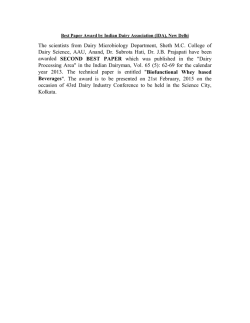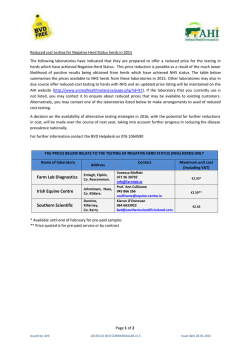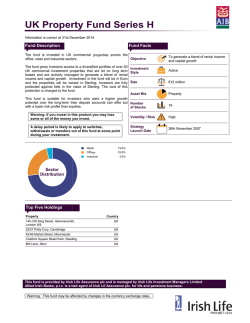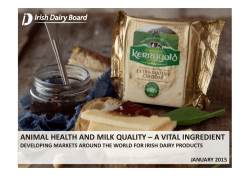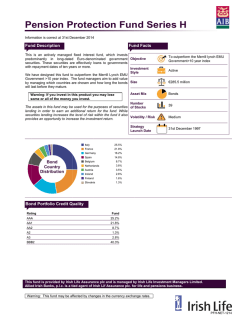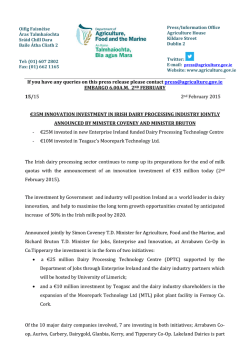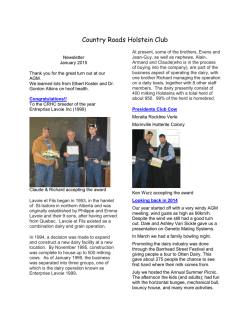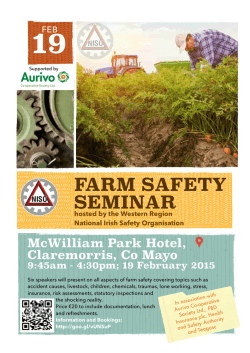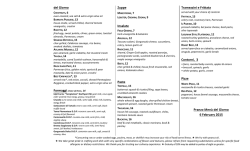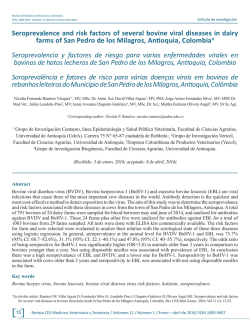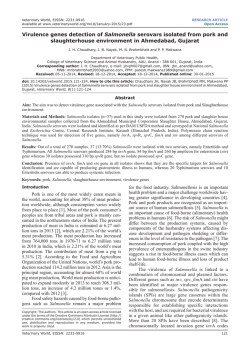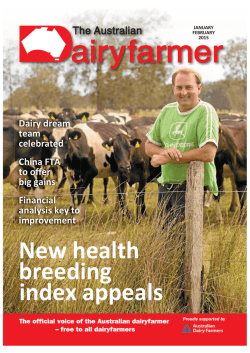
John Mee - Teagasc
Non-regulated diseases in Ireland Cost overview John Mee AGRIC, Teagasc, Moorepark, Cork January 2015 Diseases of relevance Production Infectious diseases Mastitis BVD Lameness Johne’s disease Milk fever IBR Displaced abomasum Parasitic disease Ketosis Salmonellosis Calf mortality Leptospirosis BVD – national implications Clinical Signs • Poor fertility (conception rates) • Poor calf health • Increased number of abortions, stillbirths and/or deformities • Birth of weak calves • Occurrence of severe acute BVD • Occurrence of fatal mucosal disease Cost to Irish dairy farmers €63/cow/year (Stott et al., 2012) Individual outbreaks can cost up to €30,000 per outbreak in Spring-calving herds Increased likelihood due to PI retention and increase in naïve herds BVD – international implications Potential for export restrictions to BVD-free countries BVD national eradication scheme will significantly reduce any international impact IBR – national implications Clinical Signs Initial outbreak Sudden milk drop and high fever Nasal discharge – red, crusty nose Sore and cloudy eyes Severe pneumonia - 2o bacterial infections Abortions in the second half of pregnancy Increase in calf pneumonia Repeat outbreak (less severe) Cost to Irish dairy farmers Potential for 250Kgmilk loss/cow/year (Sayers et al., unpublished preliminary data) As yet unquantified genetic losses IBR – international implications Potential for export restrictions to IBR-free countries IBR national eradication scheme based on vaccination required to reduce international impact Johnes – national implications Clinical signs • Chronic, eventually fatal, weight loss • Progressive wasting • Persistent and severe diarrhoea • Clinical signs rarely seen in animals less than two years of age • In general, clinical signs relatively rare on majority of Irish dairy farms Cost to Irish dairy farmers Based on existing Irish studies costs at farm level appear minimal (Hoogendam et al., 2009) (Kennedy et al., unpublished data – 2015) Johnes – international implications • Crohn’s disease- zoonosis ??? • Link 1st postulated in 1913 • Over 100 years later – no confirmation “Taking all the evidence into consideration, the review group is of the opinion that currently a causative association between Map and Crohn's disease is unproven” “There is insufficient evidence to prove or disprove that Map is a human pathogen or that it is the cause of Crohn's disease” However, Johnes = next food crisis e.g. BSE? Voluntary scheme timely from an international point of view Salmonella – national implications Clinical signs Adult Abortion Septicaemia Fever, no appetite Diarrhoea Dehydration Weight loss • Calf • Septicaemia • Fever, no appetite • Dehydration • Scour • Dry gangrene (distal extremities) • Bone lesions Cost to Irish dairy farmers Total annual profits in unvaccinated herds were reduced by €77.31, €94.71, and €112.11 per cow at a milk price of 24.5, 29.5, and 34.5 cents per litre as a result of exposure to Salmonella. Over €11,000/year in 100 cow Spring-calving dairy herd (O’Doherty et al., 2015, in press) Salmonella – international implications • Zoonotic organism • Public health implications • Prevent Irish-related food scares COST/BENEFIT Herds vaccinated for Salmonella generate €67.09, €84.48, and €101.89 per cow more profit at a milk price of 24.5, 29.5, and 34.5 cents per litre compared to herds positive for Salmonella exposure (O’Doherty et al., 2015, in press) National vaccination programme requires consideration Parasites – implications On-farm losses yet to be fully quantified Data available from Teagasc Further analysis required International implications relate to use and/or overuse of anthelmintic products - residues DAFM-funded projects on-going in Moorepark to investigate optimum anthelmintic strategies for Irish farmers Other – national implications Exposure to Leptospira hardjo resulted in a reduction in annual farm profits of €13.83, €13.78, and €13.72 per cow at a milk price of 24.5, 29.5, and 34.5 cents per litre Herds vaccinated for L. hardjo generate €9.74, €9.69, and €9.63 per cow more profit compared to unvaccinated exposed herds Exposure to Neospora caninum resulted in a reduction in annual farm profits of €11.55, €12, and €12.44 per cow at a milk price of 24.5, 29.5, and 34.5 cents per litre (O’Doherty et al., 2015, in press) Required Action: Establish disease status • • • • • • • • BVD IBR Salmonellosis Leptospirosis Johnes Disease Salmonella Neospora caninum Parasites Bulk milk / individual milk / blood / faeces AHI programmes & ICBF data recording ALLOWS STRATEGIC PLANNING FOR INDIVIDUAL FARMS TEST & CULL e.g. BVD, IBR VACCINATE e.g. Salmonella, Leptospirosis, IBR MODIFY MANAGEMENT e.g. Johnes, Parasites Conclusions: Cost/Benefit • Positive cost/benefit exists for control of diseases outlined with exception of Johnes • Potential implication of Johnes disease, however, demands a control programme • Johnes calf management leads to additional calf health benefits which require quantification • BVD PIs MUST be cleared to avoid costly farm outbreaks • Majority of farmers will benefit directly from national vaccination programmes for Salmonellosis, Leptospirosis, and IBR Acknowledgements Stated research findings are an output from the Teagasc herd health research team funded by the Irish Dairy Levy. The team wish to acknowledge farmers and vets participating in Teagasc research studies who supply samples and data on a regular basis.
© Copyright 2024
